I can’t explain how many years I’ve been obsessed with Iris de la Torre’s work – especially her brooches.
When I lived in London, I used to gaze at her Frida Kahlo–inspired collection on display at the Victoria and Albert Museum.
What I’ve always admired about her work too, is that Iris is constantly researching the history of style in Mexican women to create her pieces, and the insights she shares on Instagram are always very inspiring.
There’s a very playful element in incorporating Mexican folklore into jewelry, giving it a different perspective—like her rings inspired by the Mexican folk papier-mâché doll.
Funnily enough, I recently met Iris in an online conversation when I realized she was actually from Guadalajara, although she’s currently based in the U.K. It was surprising and at the same time not, considering all the talent that comes from this city.
With this in mind, Iris answered a few questions to share more about her love for jewelry and her explanation behind her obsession with brooches and the history of the Mexican women who wore them.



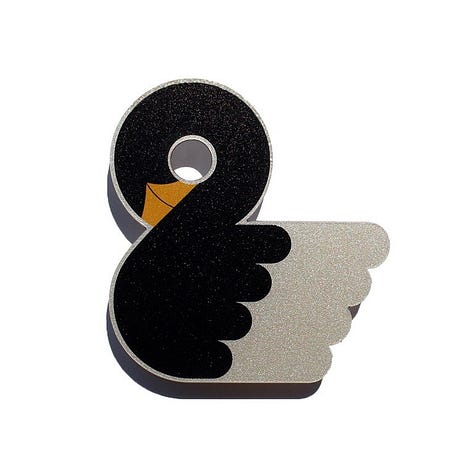
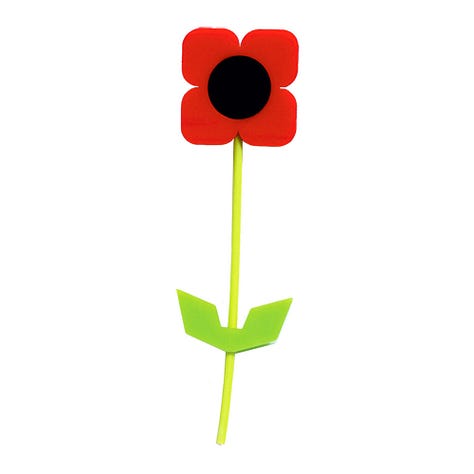
Iris, something that has always fascinated me about your work as a jewelry and accessories designer is the emphasis you place on brooches.
I understand that you’ve focused on them because of your aunt Nina. When you first started making jewelry, did you already know you wanted to focus on these specific pieces?
My aunt Nina is, without a doubt, the most elegant woman I know. She’s always had an innate talent for mixing colors and prints in a unique way. Her style goes beyond trends—she’s always been ahead of her time, and that shows in the details she chooses: her accessories, rings, jewelry, shoes, and bags always complete her look with unmatched sophistication. To me, my aunt Nina is like a Mexican Audrey Hepburn.
I remember she gave me my first brooch on the day of my First Communion, when she was my godmother. It was such a meaningful gesture to me that I still cherish it dearly. She, along with her husband and my parents, were the ones who encouraged me to travel and study jewelry design in London. Her unconditional support marked a turning point in my professional life.
It’s funny because when I first arrived in London, I did so with the idea of studying traditional jewelry design and manufacturing. However, that wasn’t the direction I ended up taking. At university, we were encouraged to think about what we wanted to communicate through our designs. This led me to a more conceptual approach—starting from a passion for a topic, diving into deep research, then creating images, sketches, and prototypes. That’s how I turn ideas into something tangible, with an innovative approach that always seeks to adapt to the body in both a functional and ornamental way.
I remember the first time I professionally designed a brooch was during my second year in the jewelry program at the Metropolitan University of London (School of Art, Architecture and Design). At the time, I decided to take a trip to Kew Gardens, London’s botanical garden, to find inspiration in the global flora growing there. I was captivated by the water lilies, and from them came the idea for a magnetic acrylic flower brooch with a long rubber stem, nearly as tall as me, that could wrap around the body and transform into a belt, necklace, or brooch depending on how it was worn. This project marked the beginning of a more organic and experimental design approach.
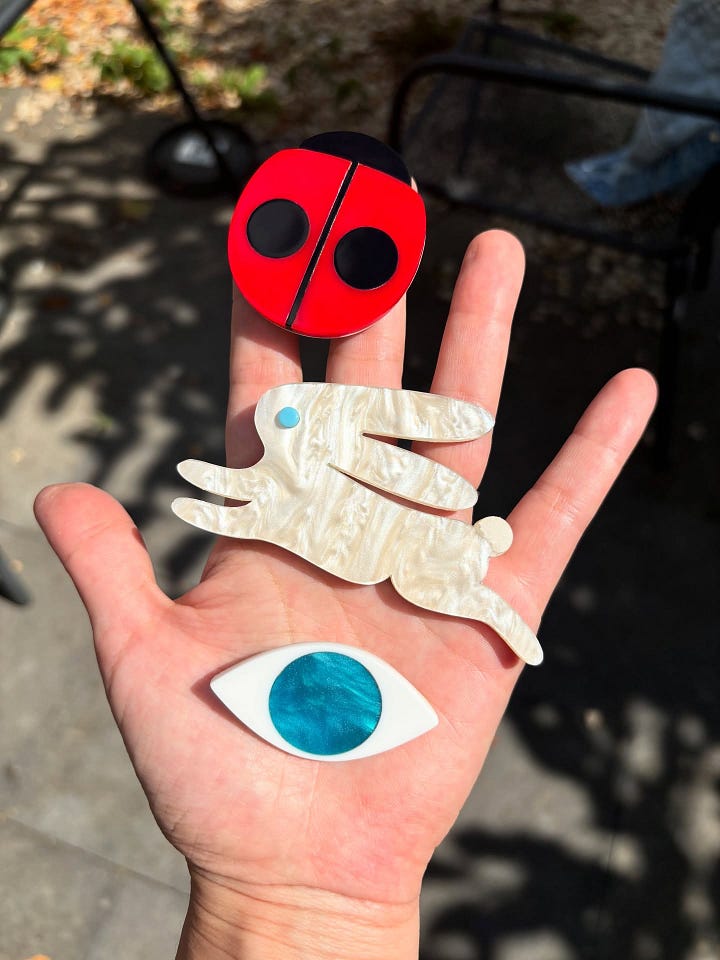
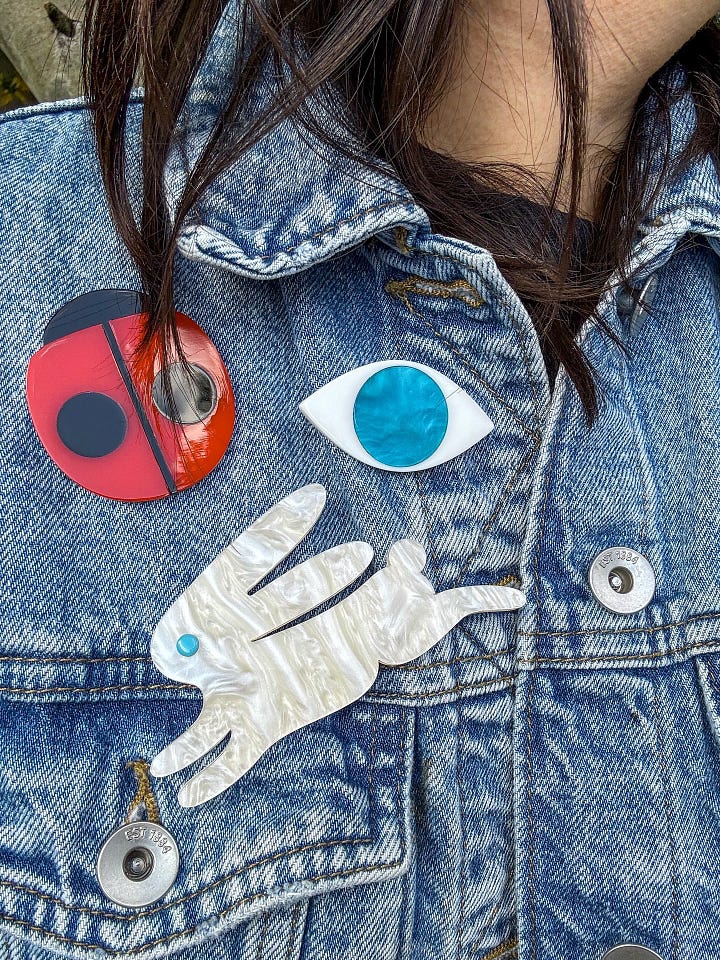
What does the use of brooches mean to you? It’s something that might seem a bit old-fashioned, but it has its moments of resurgence—like now. And also the creation of large pieces, not necessarily subtle ones.
The idea of brooches has always fascinated me. Even though they’re often seen as somewhat old-fashioned, they’ve always sparked a certain curiosity in me. Fashion changes and adapts to styles and everyday practices, but to be honest, I’ve never been too concerned with how brooches are “meant” to be worn, whether they’re big or small, or if they’re considered outdated. What interests me is the design and form of the piece—its origin, the story behind it, and most of all, how it’s made. I’m intrigued by the materials used to create it and how it functions both as a work of art and a piece of jewelry.
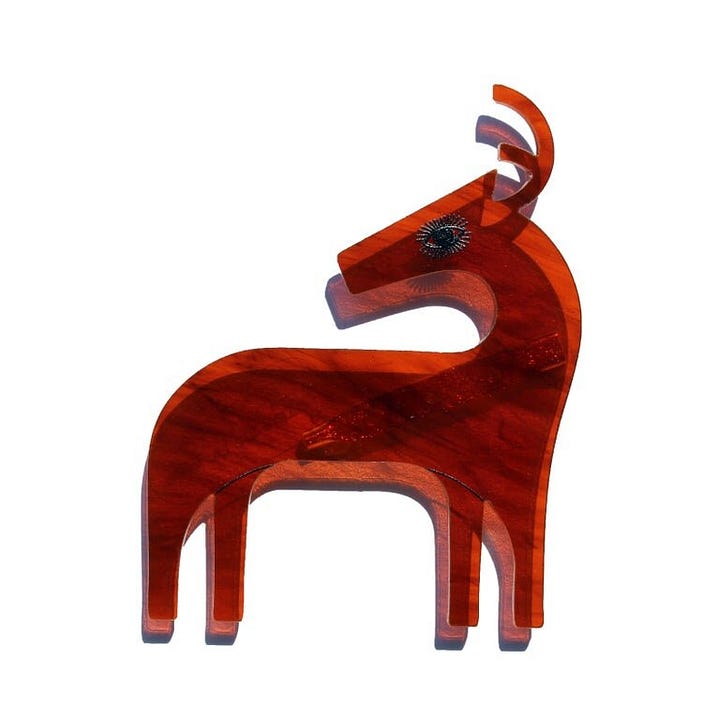
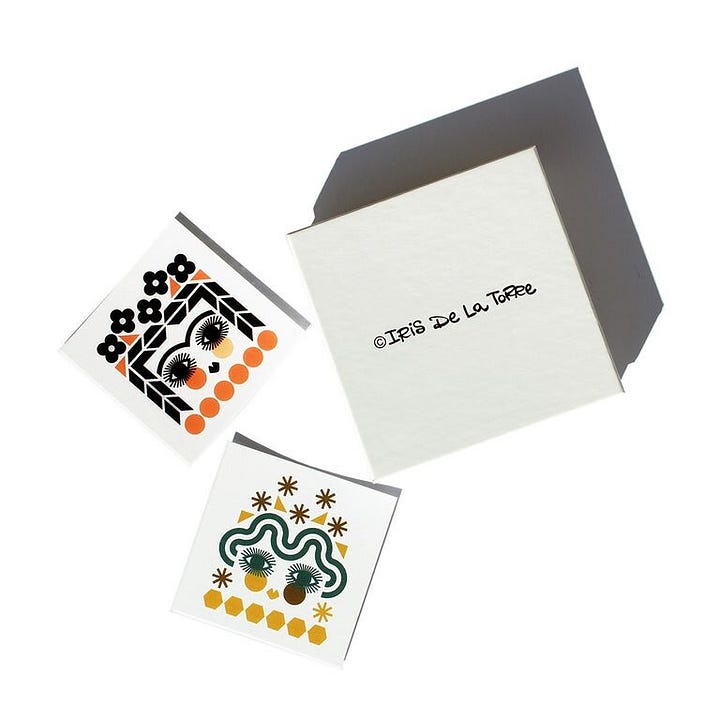
You shared the photo of Frida Kahlo with Rosa Rolanda, and it caught my attention because I’ve also been fascinated by the brooches Rosa wears in that image. Have you noticed anything else in your research about the use of brooches among Mexican women?
The iconic photo of Rosa Rolanda and Frida Kahlo, taken in 1940 at the Casa Azul, is a fascinating image, filled with mystery and immense historical value for Mexican culture. Whenever I get the chance, I dive into research on photos of notable Mexican women throughout history, especially those with interesting fashion, brooches, and Mexican jewelry. The golden era of Mexican art, spanning the 1920s to the 1950s, has me completely captivated. If I could, I would love to time travel, befriend these great women, invite them for coffee, and spend hours watching them, admiring their essence, and soaking up their talent.
Currently, I’m collecting information and images from that beautiful time in Mexico, hoping they’ll inspire me to create new jewelry pieces. I’m fascinated by photographs of Nahui Ollín, and my new muse is Leonora Carrington. However, in the photos I’ve seen of her, there’s something simpler about her style—they rarely wear jewelry. I wonder, what kind of jewelry would they have liked? Maybe it’s the perfect time to start a collection of brooches inspired by these Mexican muses!

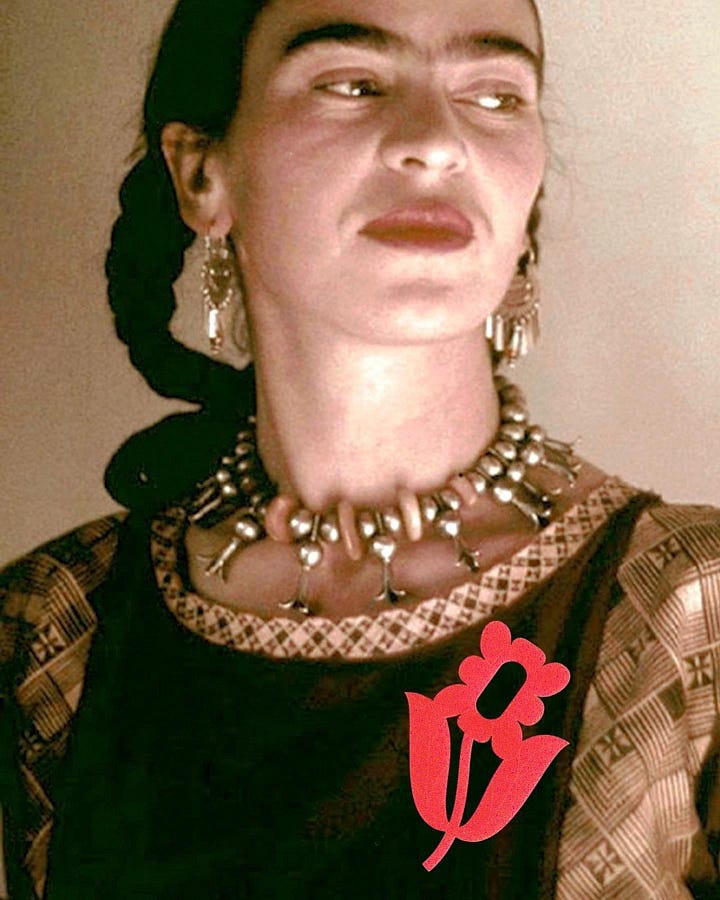
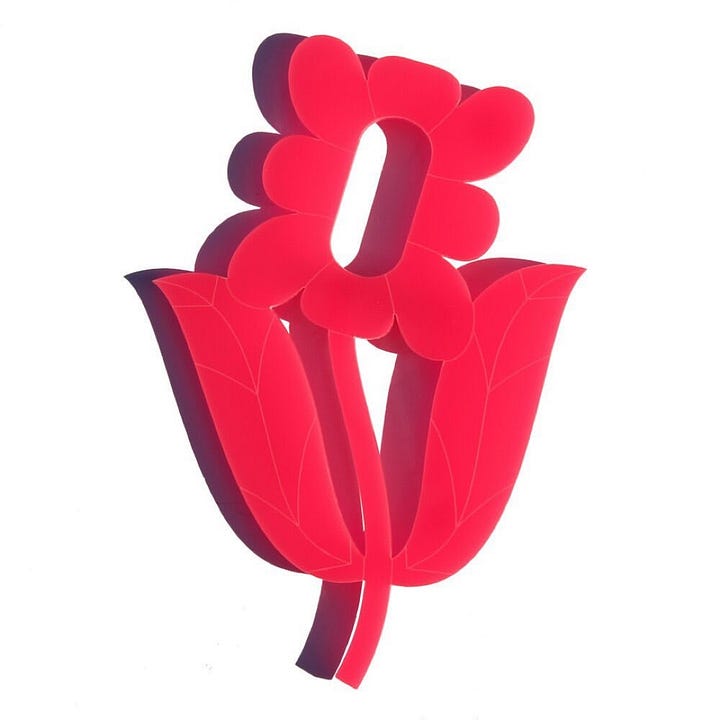
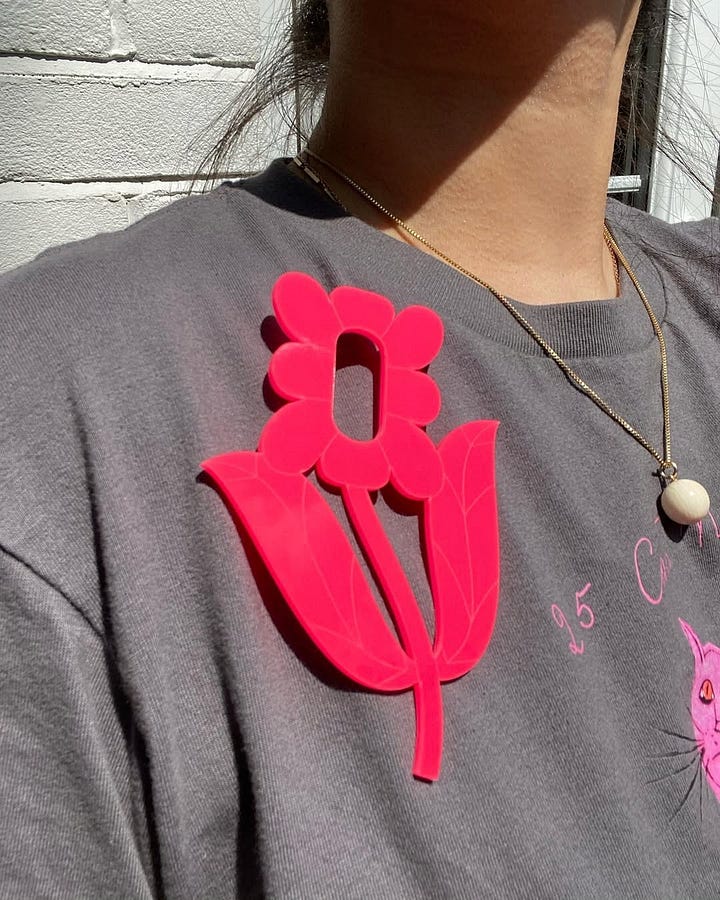
How do you recommend people wear brooches today?
However people feel most attractive and comfortable! Nowadays, brooches can be worn in versatile and modern ways, adapting to different styles and occasions. My recommendation is not to limit yourself to traditional norms. Brooches can be pinned on jacket lapels. They can also be worn in the hair, like a pin. Brooches are a wonderful way to personalize any outfit, adding character and an artistic touch that can completely transform a look. The key is to dare to play with them—combine them with different garments and use them as a form of personal expression. Personally, I love wearing them on the lapel of my winter coat, on my summer dresses, and sometimes even pinning them to my bags so they can come with me as good luck charms wherever I go.
I’ve followed your work for more than a decade now, and I feel you’ve always been very true to your vision of Mexican folklore. What’s your perspective on that?
Mexican folklore is one of my greatest passions. It’s ingenuity, tenderness, joy—an expression of the most beautiful aspects of Mexican creativity and craftsmanship. Folk art runs through my veins; it’s in my DNA. Over time, I feel I’ve developed a style where I can’t sketch a single idea without a spark of folklore blending with my own personality. They say you become more Mexican outside your country than within—and that truly resonates with me!
I understand your work is also very detailed and requires a lot of research and experimentation. How often do you explore new ideas to create pieces? For example, speaking of your papier-mâché doll ring made with mother-of-pearl, silver, and resin—how long did it take you to choose those materials or how many reinterpretations did you go through before arriving at the final version?
I try to launch a new collection every year, but often my projects come from a long accumulation of ideas—sketches, research, and concepts that evolve over weeks, months, or even years.
“Las Muñequitas de Cartón” is a project I started eight years ago and one I see accompanying me for life. Each November, my mom and my sister Tamara look for the tiniest and most charming dolls at Guadalajara’s Day of the Dead market. Sometimes they find older ones at the Avenida México flea market—worn by time and full of personality. Those are the best ones!
Papier-mâché was a natural choice to turn them into jewelry—it’s authentic, original, and allows me to capture their facial details with a visual language that feels deeply mine.
One of the biggest challenges has been translating their charm graphically, since their imperfect nature is part of what makes them special. I’ve found they come to life best as tiny sculptures—especially rings—rather than digital or flat illustrations. That’s the magic of Mexican folk art: creating treasures by hand from humble materials.
Right now, I’m preparing a small collection for MADE London Marylebone this October. I’m both excited and nervous—it will be the first time pieces from this new project are available for people to purchase in person.
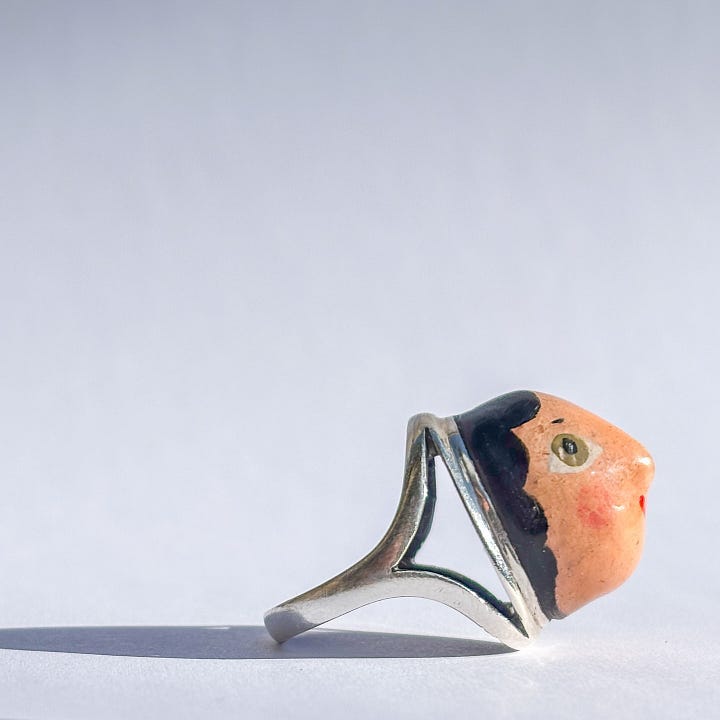
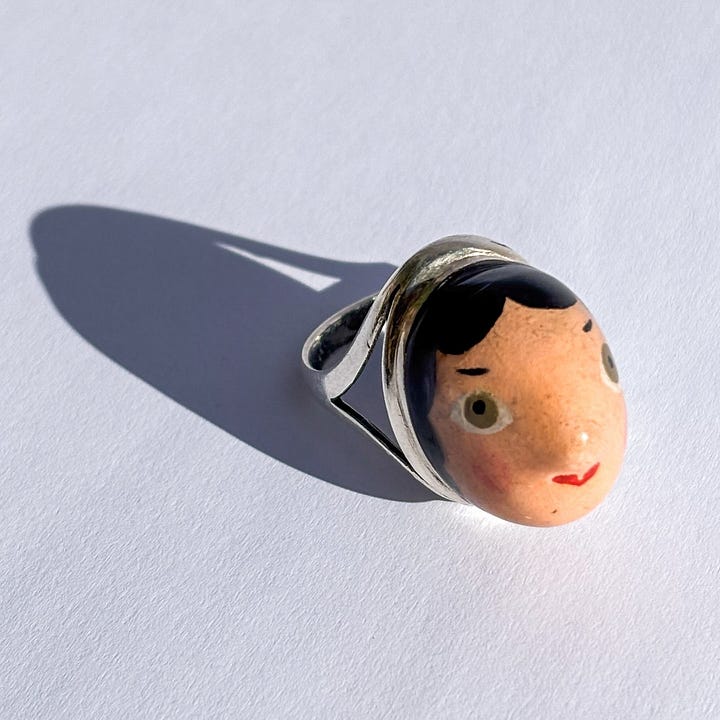
In one of your recent Instagram posts, you talked about using new materials, showing that beautiful parrot made of metal, and you mentioned you’re experimenting more and entering a new phase. Can you tell me more about this moment, and if something specific triggered this change?
I believe my career matures as I do. Iris de la Torre wouldn’t exist without design and art—and vice versa. As I grow, my perspective and tastes evolve too. Lately, I’ve been exploring new materials while staying true to my original style and core elements like acrylic and rubber, which capture my graphic, colorful language.
In today’s world of AI and mass production, I think we’re returning to a deep appreciation for the handmade and authentic. My work is moving toward materials like papier-mâché and recycled metals—like the brass parrot brooch—as part of this new phase. My goal is to experiment, enjoy the process, and hopefully create pieces that resonate with others.
Finally, how do you see your work evolving in the future?
Dreaming is allowed! I have big ideas, and my vision is to take my designs to an even larger scale. I imagine my creations integrated into interiors—from wallpaper, tiles, and furniture to lamps and public art in parks, even airplane graphics. I’d love to collaborate with Mexican and Latin American artisans and expand the presence of my pieces in museums in the UK and internationally. But above all, my biggest dream is to work creatively in Mexico—to find my community of talented people in my own country, collaborate with them, and eventually present an exhibition there.
That would truly be a dream come true!
Shop Iris De La Torre here.
Follow her on Instagram here and DM to request any piece that is not be available on her site.
Thank you for reading!
This is just a reminder that I don’t receive any kind of commission for the linked pieces! That’s why your support is really important to me. If this newsletter is helping you deepen your knowledge of the Latin American fashion scene, please consider supporting my work—from a monthly subscription of $5 USD to an annual offer!


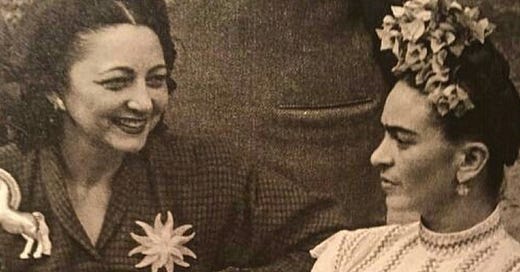


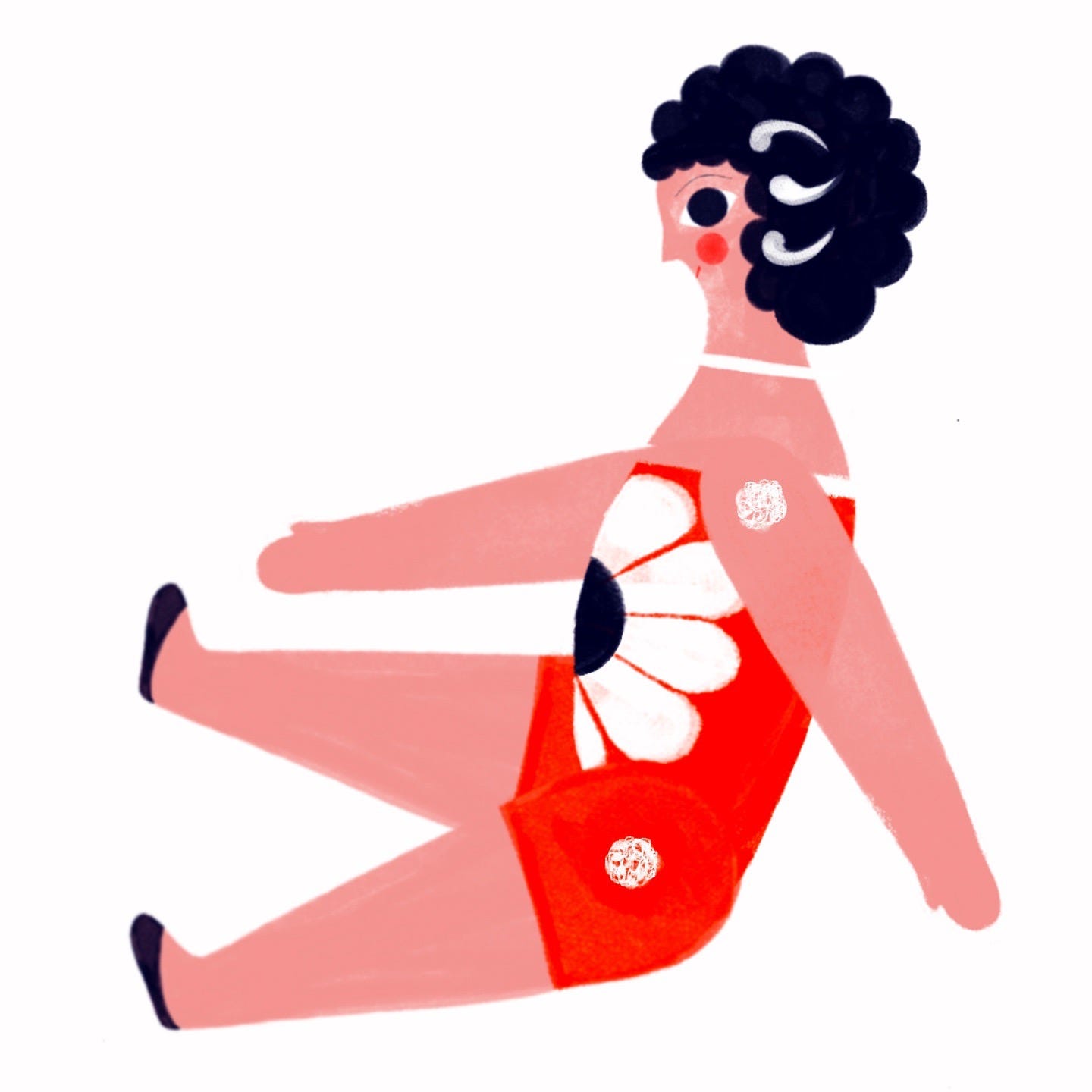
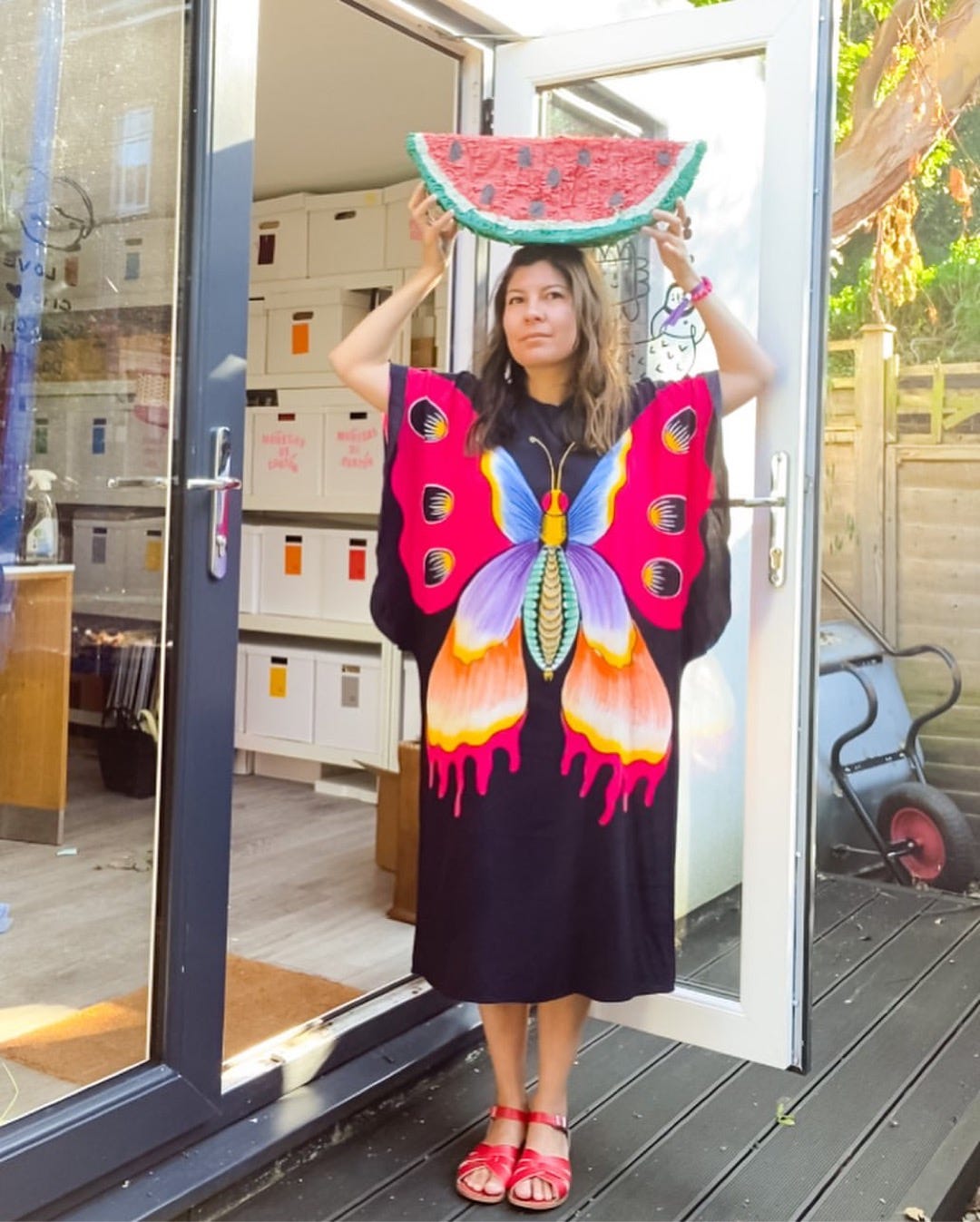
Beyond cool! 💓
I loved this post and Iris brooches, especially the part about you visiting her exhibit in London. I must put the Victoria and Albert Museum on my travel list.